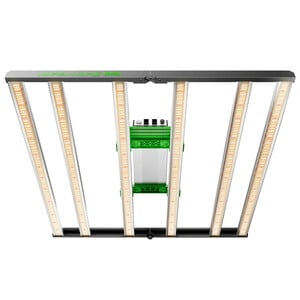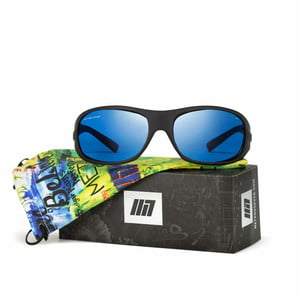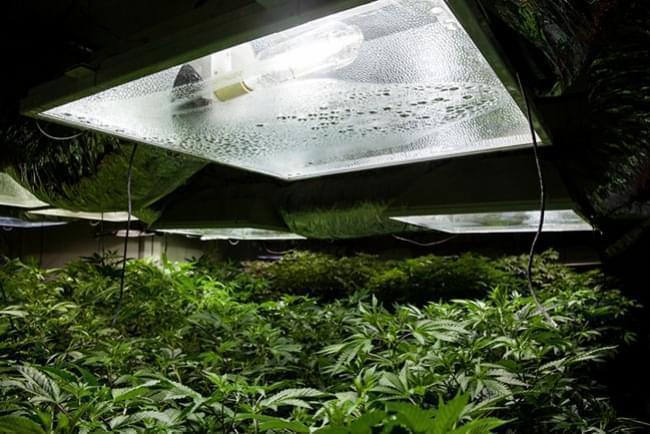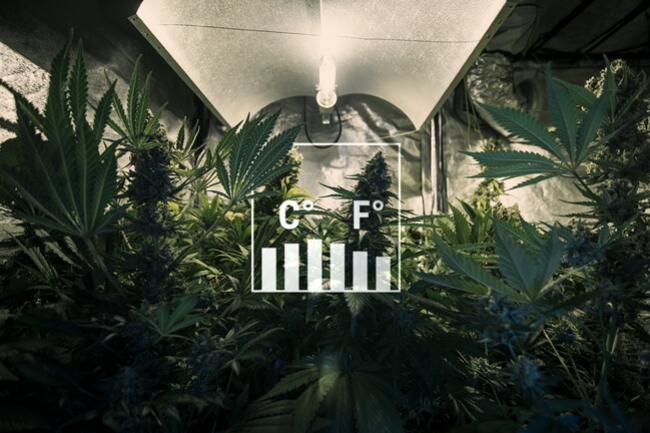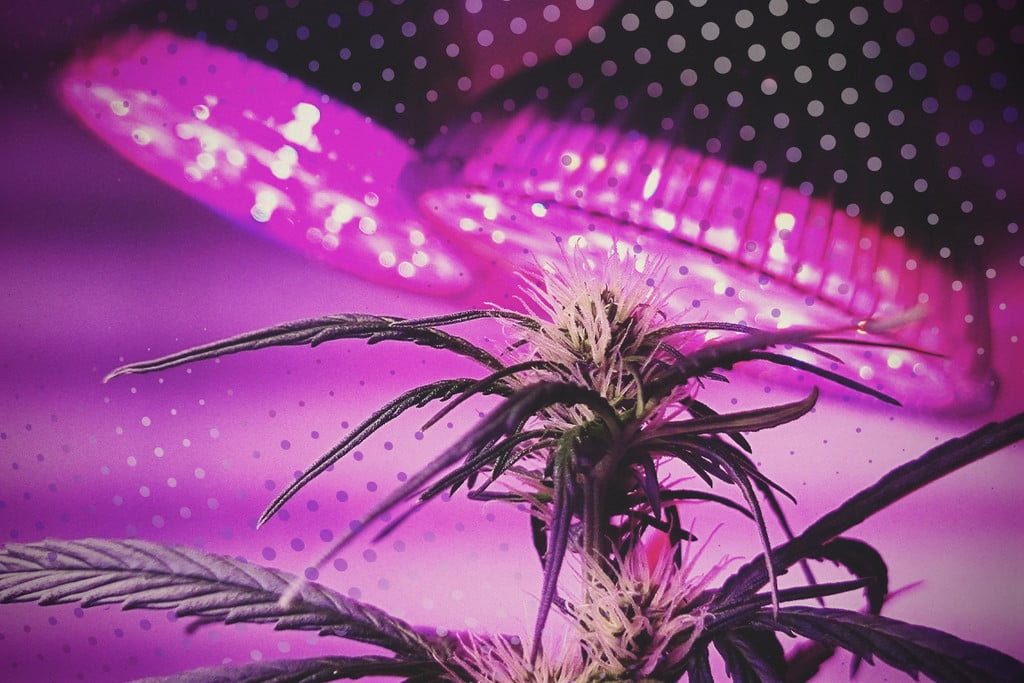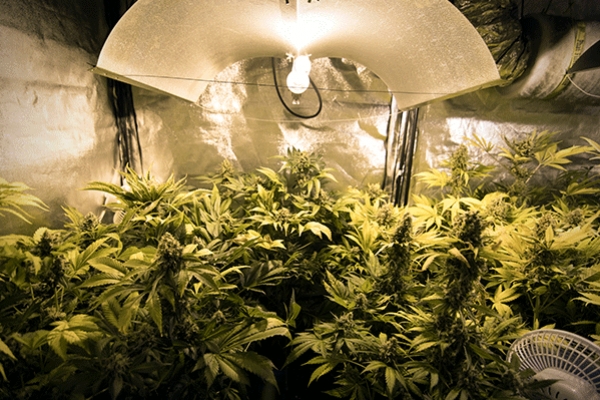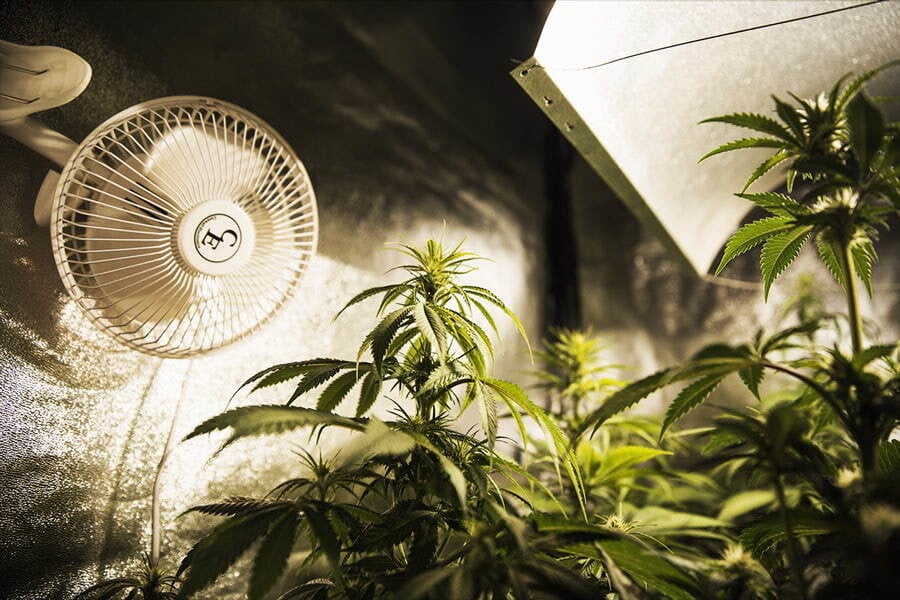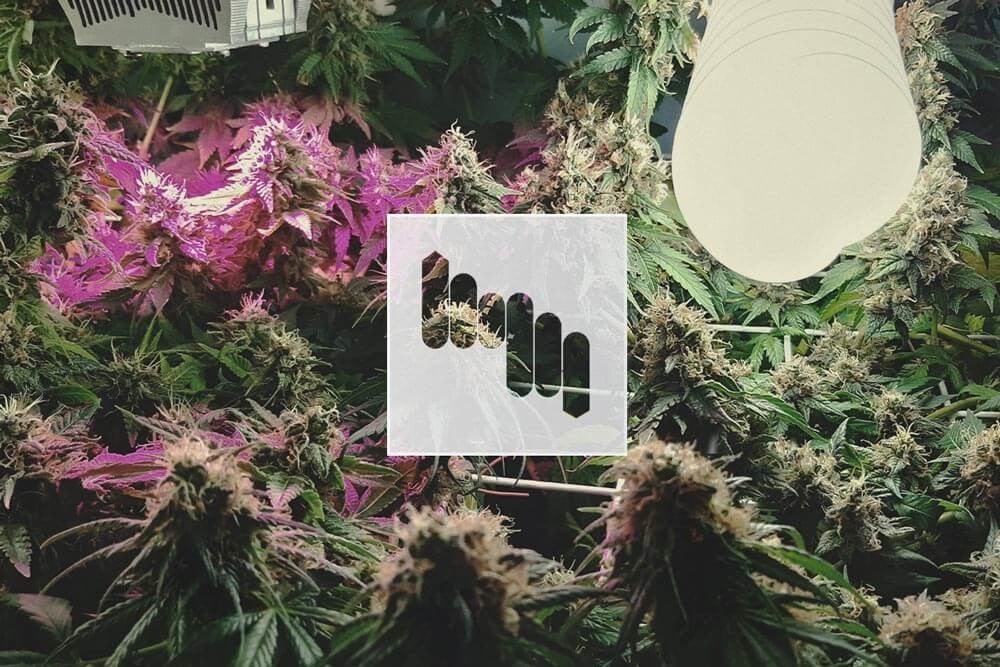.
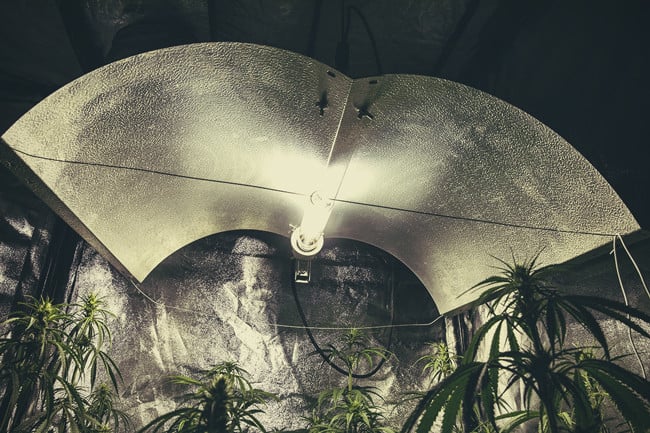
The Different Types of Lights for Cannabis: Pros and Cons
Learning about the many types of grow lights available can be overwhelming, especially for those new to cannabis cultivation. They all serve the same purpose, but many of them go about it in different ways. To clear up the confusion, we’ll be taking a look at the different types of lighting, and breaking down their pros and cons.
Let's run through a detailed comparison of the most popular cannabis grow lights.
Contents:
- Pros and cons of different cannabis grow lights
- Fluorescent (cfl) grow lights
- Hid (mh and hps) grow lights
- Led grow lights
- Lec grow lights
- Which lights are best for growing cannabis?
- Don’t just look at wattage — power equivalents between types of lights
- Lights, lights, lights: illuminating your options
Every cannabis cultivator knows how important proper lighting is when it comes to achieving a successful harvest. Along with nutrition and water, it’s one of the most crucial factors in ensuring healthy growth and bountiful yields.
Although natural sunlight is usually optimal for cannabis growing, many cultivators prefer to grow indoors for various reasons. First, not everyone lives in a climate where outdoor growing is feasible. Second, indoor growing involves timed artificial lighting, giving the grower more control over the vegetative and flowering phases of their cannabis.
With that in mind, we believe exploring the world of cannabis grow lights is more than worth it.
Pros and Cons of Different Cannabis Grow Lights
Today, you can find many different types of grow lights for indoor cultivation. But not all are equal; in fact, there are big differences when it comes to effectiveness and cost. In turn, some grow lights may be better suited for certain types of setups than others.
Let’s take a look at the types of grow lights available, and compare them relative to their pros and cons.
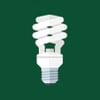
FLUORESCENT (CFL) GROW LIGHTS
CFLs, also known as “compact fluorescent lights”, are some of the most common you’ll see out there. You can get these lights at many places, including home improvement shops and even grocery shops.

FLUORESCENT (CFL) GROW LIGHTS
CFLs, also known as “compact fluorescent lights”, are some of the most common you’ll see out there. You can get these lights at many places, including home improvement shops and even grocery shops.
They are especially suited to small grows, and will be the most affordable starter lights you’ll find. Conveniently, these bulbs have standard sockets so you can use them with any standard light fixture. They do not require any special equipment.
You can find “daylight” CFL bulbs at 6500K or “warm white”, with a more reddish light spectrum, at 2700K. Bulbs with a daylight spectrum are more suitable for the vegetative growth phase, while warmer CFLs are better for the flowering phase.
| CFL PROS | CFL CONS |
| Low cost and widely available | Low light output (only suitable for growing 1–2 plants) |
| Easy to set up and use | Not optimal for flowering (produces subpar yields) |
| Good for beginners | Tends to have a shorter lifespan than other lights |
| Available in various wattages and colour temperatures | - |
| Uses little electricity, saves energy | - |
| Doesn’t get hot | - |
| Perfect for clones and seedlings | - |
| CFL PROS | CFL CONS |
| Low cost and widely available | Low light output (only suitable for growing 1–2 plants) |
| Easy to set up and use | Not optimal for flowering (produces subpar yields) |
| Good for beginners | Tends to have a shorter lifespan than other lights |
| Available in various wattages and colour temperatures | - |
| Uses little electricity, saves energy | - |
| Doesn’t get hot | - |
| Perfect for clones and seedlings | - |
-
CFL Cost and Expected Lifespan
A standard 40W CFL bulb will only cost a few bucks. This makes them great starter lights for growers on a budget! It’s a lot of bang for your buck, too, as the expected lifespan for compact fluorescents is about one year.
-
Yield per CFL
Expect to obtain 0.3 grams per watt (roughly 12 grams per standard light).

HID (MH and HPS) Grow Lights
HID (high-intensity discharge) grow lights are somewhat of a gold standard in the cannabis cultivation industry. Many growers swear by HID lighting and believe that they produce the best and biggest yields.

HID (MH and HPS) Grow Lights
HID (high-intensity discharge) grow lights are somewhat of a gold standard in the cannabis cultivation industry. Many growers swear by HID lighting and believe that they produce the best and biggest yields.
There are two main types of HID lights: MH (metal halide), and HPS (high pressure sodium) lights. The difference between the two is that MH lights produce a “cooler”, blueish light, whereas HPS lights are usually red. This makes MH lights more suitable for the vegetative phase, with HPS lights being better for flowering.
Therefore, most advanced growers use a combination of MH and HPS bulbs for the duration of the process. If, for some reason, you need to choose one type of HID for the entire grow, we would recommend HPS lights. 600W HPS lights are the most popular type. In most cases, you can usually get complete sets that include the bulbs, a ballast, and a reflector.
| HID PROS | HID CONS |
| Compared to high-end LEDs, HID grow lights cost less outright | They give off intense heat that can spike grow room temps or burn plants |
| Easy to set up and operate, even for relative beginners | You’ll need additional equipment to operate them, including an electronic ballast and reflector |
| Produces excellent yields | HID bulbs degrade over time, and you will have to replace them periodically |
| Reliable and consistent | HID lights are very power-hungry and can significantly increase electricity bills |
| Options for growth and flowering | - |
| HID PROS | HID CONS |
| Compared to high-end LEDs, HID grow lights cost less outright | They give off intense heat that can spike grow room temps or burn plants |
| Easy to set up and operate, even for relative beginners | You’ll need additional equipment to operate them, including an electronic ballast and reflector |
| Produces excellent yields | HID bulbs degrade over time, and you will have to replace them periodically |
| Reliable and consistent | HID lights are very power-hungry and can significantly increase electricity bills |
| Options for growth and flowering | - |
-
HID Light Costs and Expected Lifespan
As discussed, you can find complete HID lighting kits that include a lamp, a ballast, and a reflector for €150 and up. The low initial cost, however, will be offset by the higher operation cost (i.e. your electric bill).
The bulb lifespan is approximately one year. In turn, you should replace your bulbs annually to maintain optimal light output.
-
Yield per HID Light
You can expect around 0.5–1g+ per watt, which is roughly 300–600 grams/standard light.

LED GROW LIGHTS
Just a few years ago, LEDs were not suitable for “serious” grows, aside from providing light for seedlings or clones. However, LED technology has come a long way in a short time.

LED GROW LIGHTS
Just a few years ago, LEDs were not suitable for “serious” grows, aside from providing light for seedlings or clones. However, LED technology has come a long way in a short time.
Most quality LEDs emit a light that works for both veg and flowering, while some come with a switch to change the light spectrum according to the appropriate phase. Modern LED grow lights, such as those with COB (“chip on board”) technology or “Quantum boards”, can now provide solid light intensity and penetration, even for the most demanding grows. Today, LEDs can rival, or even surpass, other types of grow lighting, including HID lights. That being said, you need to get the right ones. These lights tend to be some of the most expensive, but they can also save you some serious money in the long-run.
| LED PROS | LED CONS |
| Most energy-efficient type of grow light (saves money and energy over time) | High-quality fixtures with modern modules can put a decent dent in your wallet |
| LED lights run much cooler compared to HID lighting, barely producing any heat at all | There is no industry standard for LED lights |
| Cuts back on cooling costs and reduces risk of burning plants | Cheap models on the market produce inferior results |
| Most commercially available LED grow lights are “plug and grow”—no special ballast required | Potentially lower yields than HID |
| Streamlined; can support both veg and flower | - |
| LED PROS | LED CONS |
| Most energy-efficient type of grow light (saves money and energy over time) | High-quality fixtures with modern modules can put a decent dent in your wallet |
| LED lights run much cooler compared to HID lighting, barely producing any heat at all | There is no industry standard for LED lights |
| Cuts back on cooling costs and reduces risk of burning plants | Cheap models on the market produce inferior results |
| Most commercially available LED grow lights are “plug and grow”—no special ballast required | Potentially lower yields than HID |
| Streamlined; can support both veg and flower | - |
Mars Hydro FC4800 – 480W LED Grow Light
|
|
660-665nm, 2800-3000K, 4800-5000K |
|
|
84x84x8 cm |
|
|
480W±5% |
|
|
2.85μmol/j |
|
|
1368μmol/S |
|
|
Samsung LM301H EVO |
|
|
120x120 cm |
|
|
3.5g/watt |
Buy Mars Hydro FC4800 – 480W LED Grow Light
-
LED Light Cost and Expected Lifespan
You may find a low-quality LED fixture for a single plant for €120. But for good LEDs from a reputable brand, expect to pay several hundred euro, even up to €2,000. You get what you pay for with LEDs, so it’s always worth doing your research and finding a reputable brand.
Good LED grow light fixtures have a lifespan of 5–10 years.
-
Yield per LED Light
0.5g–1.8g per watt, depending on the make/quality of the light.
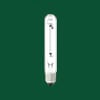
LEC GROW LIGHTS
LEC lights, also called ceramic metal halide (CMH) or ceramic discharge metal halide (CDM) lights, are the last type we’ll be discussing today.

LEC GROW LIGHTS
LEC lights, also called ceramic metal halide (CMH) or ceramic discharge metal halide (CDM) lights, are the last type we’ll be discussing today.
The name also hints at the difference between LEC lights and conventional HID lights. LEC lights use a ceramic arc tube, rather than the quartz version found in regular MH lights. The result is a more natural colour, more lumens per watt, and a longer lifespan. LECs include built-in ballasts, so that aspect of setup is very simple.
While modern LED lighting is now becoming the de-facto standard in most grow rooms, LEC lights do have certain benefits. This makes them an interesting alternative to other types.
| LEC PROS | LEC CONS |
| Emits a natural light spectrum (easier to see your cannabis and spot issues) | UV-B light is harmful to humans (safety equipment is needed to reduce risk to skin and eyes) |
| LEC lights give off UV-B rays that may improve yield or trichome production | High setup cost |
| Simple setup and operation | Generates lots of heat |
| Longer life-span than HID lights | Slightly less powerful than HID lights |
| - | UV-B rays are blocked by glass |
| LEC PROS | LEC CONS |
| Emits a natural light spectrum (easier to see your cannabis and spot issues) | UV-B light is harmful to humans (safety equipment is needed to reduce risk to skin and eyes) |
| LEC lights give off UV-B rays that may improve yield or trichome production | High setup cost |
| Simple setup and operation | Generates lots of heat |
| Longer life-span than HID lights | Slightly less powerful than HID lights |
| - | UV-B rays are blocked by glass |
-
LEC Light Cost and Expected Lifespan
Decent LEC grow light fixtures start at €250–300, with higher-end models setting you back up to €1,000. The bulbs also cost somewhat more than normal MH/HPS bulbs.
On the plus side, LEC bulbs will last about twice as long as HID ones, approximately two years.
-
Yield per LEC Light
When utilising LEC lights, you can expect up to 1.5g per watt.
Grow Light Cost Calculator
Seedling Stage
Calculator results
Vegetative Stage
Flowering Stage
Grow Light Cost Calculator
Seedling Stage
Calculator results
Vegetative Stage
Flowering Stage
Which Lights Are Best for Growing Cannabis?
So, what type of grow lighting is best? This is a decision that will depend on various factors, including the size of your growing area, the type of weed you’re growing, and, last but not least, how much you can spend.
If you require a light for seedlings and clones, or you happen to have a “micro grow” in a very small space (like a cupboard), you are likely best off with a simple CFL light.
For slightly bigger grows, consider a decent LED light anywhere from 400–600W. As there won’t be much heat from the light, you may be okay with a simple exhaust system and a fan.
For medium to large growing operations, you can look into high-end LED fixtures and LEC lights, or go with proven HID lighting solutions.
Don’t Just Look at Wattage — Power Equivalents Between Types of Lights
Now, be aware that a 200W CFL isn’t the same as a 200W light LED, and neither are the same as a 200W HID. The wattage only indicates how much power the fixture uses, not saying anything about the light output. Because lighting technologies differ in their efficiency, you can’t compare them based on their wattage alone. The only type of light where one can expect certain yields (given a particular wattage) would be HID lights, as these are standardised.
Likewise, this also means that a LED fixture stated as being 600W doesn’t necessarily emit the same amount of light (and therefore produce the same yields) as, say, a 600W HID light. Honestly, the only way to determine true light output is to go over the specs from the manufacturer. Better yet, ask other growers for their experiences with a particular make or type of light—that way you’ll know what to expect.
Lights, Lights, Lights: Illuminating Your Options
Choosing the right grow light for your cannabis is among the most important decisions you’ll make.
If you want superb yields, you definitely can’t bypass getting at least a 600W or stronger HID light, or an equivalent LED or LEC. If, on the other hand, you’re looking after seedlings and clones, a less powerful CFL will do.
Most importantly, don’t spend money on a grow light without getting informed at first. A great “bargain” may ultimately just be a waste of your hard-earned cash. If prices for a good light are intimidating, you can also look into DIY solutions! You can find all sorts of kits online that come with the necessary parts. That way, you can save some money while getting a quality light that will serve you and your plants well.


























